Poets' Corner
.jpg)
Poets' Corner is the name traditionally given to a section of the South Transept of Westminster Abbey because of the high number of poets, playwrights, and writers buried and commemorated there.
The first poet interred in Poets' Corner was Geoffrey Chaucer.[1] Over the centuries, a tradition has grown up of interring or memorialising people there in recognition of their contribution to British culture. In the overwhelming majority of cases, the honour is awarded to writers.
In 2009 the founders of the Royal Ballet were commemorated in a memorial floor stone and on 25 September 2010 the writer Elizabeth Gaskell was celebrated with the dedication of a panel in the memorial window.[2] On 6 December 2011, former Poet Laureate Ted Hughes was commemorated with a floor stone.[3] On 22 November 2013, the fiftieth anniversary of his death, writer C. S. Lewis was commemorated with a memorial floor stone.[4] The poet Philip Larkin was commemorated with a floor stone dedicated on 2 December 2016.[5][6][7]
History
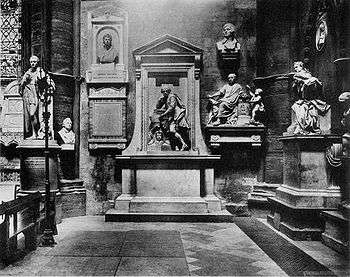
The first person interred, Geoffrey Chaucer, owed his burial there in 1400 more to his position as Clerk of Works of the Palace of Westminster than to his fame as a writer. The erection of his magnificent tomb, however, by Nicholas Brigham in 1556 (to where Chaucer's remains were then transferred) and the nearby burial of Edmund Spenser in 1599 started a tradition that is still upheld. The area also houses the tombs of several Canons and Deans of the Abbey, as well as the grave of Thomas Parr who, it is said, died at the age of 152 in 1635 after having seen ten sovereigns on the throne.
Burial or commemoration in the Abbey does not always occur at or soon after the time of death. Lord Byron, for example, whose poetry was admired but who maintained a scandalous lifestyle, died in 1824 but was not given a memorial until 1969. Even William Shakespeare, buried at Stratford-upon-Avon in 1616, was not honoured with a monument until 1740 when one designed by William Kent was constructed in Poets' Corner (though shortly after his death William Basse had suggested Shakespeare should be buried there.) Samuel Horsley, Dean of Westminster in 1796, was said to have tartly refused the request for actress Kitty Clive to be buried in the Abbey:
- if we do not draw some line in this theatrical ambition to mortuary fame, we shall soon make Westminster Abbey little better than a Gothic Green Room![8]
Not all poets appreciated memorialisation and Samuel Wesley's epitaph for Samuel Butler, who supposedly died in poverty, continued Butler's satiric tone:
- While Butler, needy wretch, was yet alive,
- No generous patron would a dinner give;
- See him, when starv'd to death, and turn'd to dust,
- Presented with a monumental bust.
- The poet's fate is here in emblem shown,
- He ask'd for bread, and he received a stone.
Some of those buried in Poets' Corner also had memorials erected to them over or near their grave, either around the time of their death or later. In some cases, such as Joseph Addison, the burial took place elsewhere in Westminster Abbey, with a memorial later erected in Poets' Corner. In some cases a full burial of a body took place, in other cases the body was cremated and the ashes buried. There are also cases where there was support for a particular individual to be buried in Poets' Corner, but the decision was made to bury them elsewhere in the Abbey, such as Edward Bulwer-Lytton. Other notable poets and writers, such as Aphra Behn, are buried elsewhere in the Abbey. At least two of the memorials (both to individuals buried in Poets' Corner – Rowe and Gay) were later moved to a location elsewhere in the Abbey due to the discovery of old paintings on the wall behind them.
Memorial types
The memorials can take several forms. Some are stone slabs set in the floor with a name and inscription carved on them, while others are more elaborate and carved stone monuments, or hanging stone tablets, or memorial busts. Some are commemorated in groups, such as the joint memorial for the Brontë sisters (commissioned in 1939, but not unveiled until 1947 due to the war), the sixteen World War I poets inscribed on a stone floor slab and unveiled in 1985, and the four founders of the Royal Ballet, commemorated together in 2009.[9]
The grave of Ben Jonson is not in Poets' Corner, but is in the north aisle of the nave. It has the inscription "O Rare Ben Johnson" (sic) on the slab above it. It has been suggested that this could be read "Orare Ben Jonson" (pray for Ben Jonson), which would indicate a deathbed return to Catholicism, but the carving shows a distinct space between "O" and "rare".[10] The fact that he was buried in an upright grave could be an indication of his reduced circumstances at the time of his death [11] but it has also been suggested that Jonson asked for a grave exactly 18 inches square from the monarch and received an upright grave to fit in the requested space.[12] As well as the gravestone in the north aisle of the nave, a wall tablet commemorating Jonson was later erected in Poets' Corner.
As floor and wall space began to run out, the decision was taken to install a stained glass memorial window (unveiled in 1994 in memory of Edward Horton Hubbard), and it is here that new names are added in the form of inscribed panes of glass. There is room for 20 names, and currently (early 2010) there are six names on this window, with a new entry (Elizabeth Gaskell) unveiled on 25 September 2010.[13]
Burials
| Image | Name | Born | Died | Age at death | Details of funeral |
Occupation |
|---|---|---|---|---|---|---|
 |
Robert Adam | 1729 | 1792 | 63 | ... | Architect |
 |
Isaac Barrow | 1630 | 1677 | 46 | ... | Mathematician |
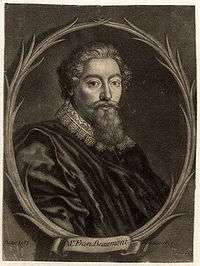 |
Francis Beaumont | 1584 | 1616 | 31–32 | Grave is unmarked. Name is inscribed on the Cowley gravestone. | Playwright |
| ... | John Beaumont | 1583 | 1627 | 43–44 | ... | Poet |
| ... | William Benson | unknown | 1549 | unknown | ... | Abbot of Westminster |
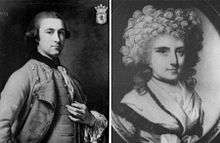 |
Mary Eleanor Bowes | 1749 | 1800 | 51 | Reported by some to have been buried in a court dress, with all the accessories necessary for a Royal audience, plus a small silver trumpet, and by others as in her bridal dress. | Poet and playwright |
 |
Robert Browning | 1812 | 1889 | 77 | Browning's grave immediately adjacent to that of Alfred Tennyson. | Poet and playwright |
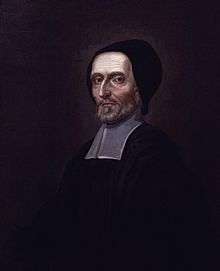 |
Richard Busby | 1606 | 1695 | 88–89 | ... | Headmaster |
 |
William Camden | 1551 | 1623 | 72 | ... | Antiquarian and historian |
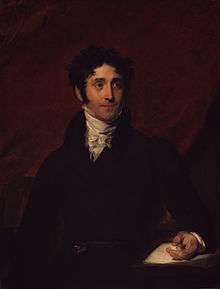 |
Thomas Campbell | 1777 | 1844 | 66 | Funeral 3 July 1844.[14] | Poet |
 |
Henry Francis Cary | 1772 | 1844 | 72 | Funeral 14 August 1844.[15] | Author and translator |
 |
Isaac Casaubon | 1559 | 1614 | 55 | ... | Classical scholar |
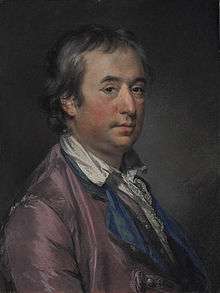 |
William Chambers | 1723 | 1796 | 75 | ... | Architect |
.jpg) |
Geoffrey Chaucer | c. 1343 | 1400 | 56–57 | Grave is unmarked. Name is inscribed on the Cowley gravestone. Memorial was also erected. | Author and poet |
 |
Abraham Cowley | 1618 | 1667 | 48–49 | ... | Poet |
 |
Richard Cumberland | 1732 | 1811 | 79 | ... | Playwright |
 |
William Davenant | 1606 | 1668 | 62 | ... | Poet and playwright |
 |
John Denham | 1614 or 1615 | 1669 | 63–65 | Grave is unmarked. Name is inscribed on the Cowley gravestone. | Poet |
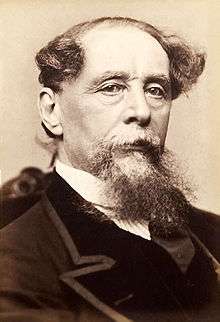 |
Charles Dickens | 1812 | 1870 | 58 | Dickens's will did not dictate his place of burial, but stipulated that there be no grand funeral ceremony. He was therefore given a secret early-morning funeral in the Abbey, 14 June 1870.[16] | Author |
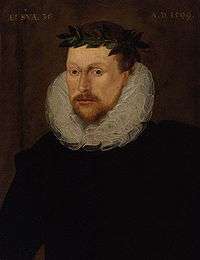 |
Michael Drayton | 1563 | 1631 | 67–68 | Died in London. Monument placed by the Countess of Dorset, with memorial lines attributed to Ben Jonson. | Poet |
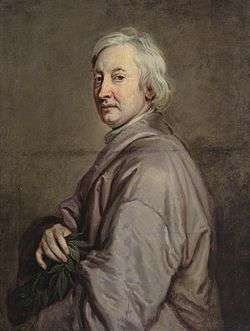 |
John Dryden | 1631 | 1700 | 68 | Grave is unmarked. Name is inscribed on the Cowley gravestone. Memorial was also erected. | Poet and playwright |
| ... | Adam Fox | 1883 | 1977 | 93–94 | ... | Oxford Professor of Poetry Canon of Westminster Abbey |
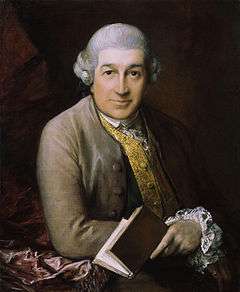 |
David Garrick | 1717 | 1779 | 61 | ... | Playwright |
 |
John Gay | 1685 | 1732 | 47 | ... | Poet and playwright |
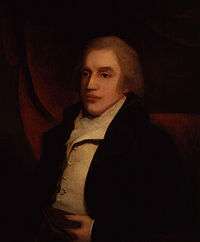 |
William Gifford | 1756 | 1826 | 70 | Gifford wanted to be buried in South Audley Chapel, "but for the pressing request of his grateful executor [John Ireland, Dean of Westminster], who was anxious that Gifford's remains should be mingled with the great and good in Poets' Corner, Westminster-abbey."[17] | Poet and editor |
 |
George Grote | 1794 | 1871 | 76 | ... | Historian |
 |
Richard Hakluyt | c.1552 | 1616 | 63–64 | ... | Author |
 |
George Frideric Handel | 1685 | 1759 | 74 | ... | Composer |
 |
Thomas Hardy | 1840 | 1928 | 87 | Hardy's funeral, on 16 January 1928, proved a controversial occasion because Hardy himself had wished to be interred at Stinsford in the same grave as his first wife, Emma. His executor Sir Sydney Carlyle Cockerell, however, insisted that he be placed in the Poets' Corner. A compromise was reached whereby his heart was buried at Stinsford with Emma, and his ashes in the Abbey. | Author and poet |
 |
Henry Irving | 1838 | 1905 | 67 | ... | Actor |
 |
Dr Samuel Johnson | 1709 | 1784 | 75 | ... | Author, poet and lexicographer |
 |
Rudyard Kipling | 1865 | 1936 | 70 | ... | Author and poet |
| ... | Nicholas Litlington | before 1315 | 1386 | 70+ | ... | Abbot of Westminster |
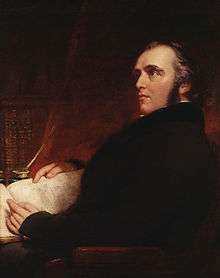 |
Thomas Macaulay | 1800 | 1859 | 59 | Public funeral, 9 January 1860.[18] | Poet and historian |
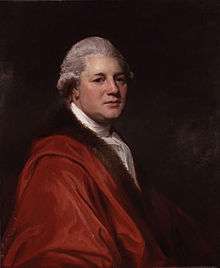 |
James Macpherson | 1736 | 1796 | 59 | ... | Author and poet |
 |
John Masefield | 1878 | 1967 | 88 | According to his wishes, was cremated and his ashes placed in Poets’ Corner. | Poet and author |
| ... | Robert Moray | 1608/9 | 1673 | 63–65 | Grave is unmarked. Name is inscribed on the Cowley gravestone. | Statesman and natural philosopher |
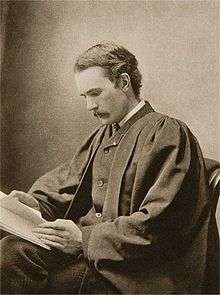 |
Gilbert Murray | 1866 | 1957 | 91 | ... | Scholar and translator |
.jpg) |
Laurence Olivier | 1907 | 1989 | 82 | ... | Actor |
 |
Old Tom Parr | 1483 | 1635 | 152 | ... | Supposedly long-lived Englishman |
 |
Matthew Prior | 1664 | 1721 | 57 | Grave is unmarked. Name is inscribed on the Cowley gravestone. Memorial was also erected. | Poet and diplomat |
 |
Nicholas Rowe | 1674 | 1718 | 44 | ... | Playwright and poet |
 |
Charles de Saint-Évremond | 1610 | 1703 | 93 | Grave is unmarked. Name is inscribed on the Cowley gravestone. Memorial was also erected. | Essayist and literary critic |
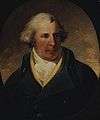 |
Richard Brinsley Sheridan | 1751 | 1816 | 64 | ... | Playwright and poet |
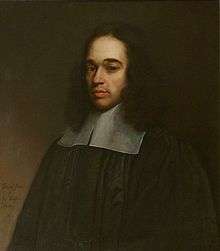 |
Robert South | 1634 | 1716 | 81 | ... | Theologian and poet |
 |
Edmund Spenser | c. 1552 | 1599 | 46–47 | ... | Poet |
| ... | Robert Stapylton | c.1607 | 1669 | 61–62 | ... | Playwright |
| ... | Mary Steele | 1678 | 1718 | 40 | ... | Letter writer |
 |
Alfred Tennyson | 1809 | 1892 | 83 | Large public funeral, 12 October 1892.[19] In 1893 the government formally requested there be a bust of Tennyson in Poets Corner. The businessman-botanist Charles Jenner offered Thomas Woolner's 1857 bust of Tennyson to the Abbey, and it was placed near Tennyson's gravestone, by moving a tablet to Christopher Anstey. There was no formal unveiling ceremony.[20] | Poet |
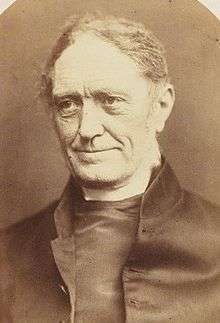 |
Connop Thirlwall | 1797 | 1875 | 78 | ... | Bishop and historian |
| ... | Thomas Triplet | 1602 | 1670 | 68 | ... | Prebendary |
| ... | Owen Tudor | 1429 | 1501 | 71–72 | ... | Monk of Westminster |
| |
Eva Marie Veigel | 1724 | 1822 | 98 | ... | Dancer |
Memorials
| Image | Name | Born | Died | Age at death | Year commemorated |
Details of memorial |
Occupation |
|---|---|---|---|---|---|---|---|
 |
Joseph Addison | 1672 | 1719 | 47 | 1809 | Statue | Poet and Essayist |
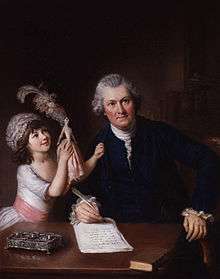 |
Christopher Anstey | 1724 | 1805 | 80 | 1807 | Stone tablet | Poet and author |
 |
Matthew Arnold | 1822 | 1888 | 65 | 1989 | Memorial bust & Mural tablet | Poet |
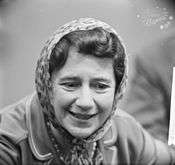 |
Peggy Ashcroft | 1907 | 1991 | 83 | 2005 | Floor stone | Actress |
 |
W. H. Auden | 1907 | 1973 | 66 | 1974 | Floor stone | Poet |
_hires.jpg) |
Jane Austen | 1775 | 1817 | 41 | 1967 | Wall tablet | Author |
.jpg) |
John Betjeman | 1906 | 1984 | 77 | 1996 | Floor stone | Poet and author |
 |
William Blake | 1757 | 1827 | 69 | 1957 | Memorial bust | Poet and artist |
| ... | Barton Booth | 1681 | 1733 | 51–52 | 1772 | Monument | Actor |
 |
Charlotte Brontë | 1816 | 1855 | 38 | 1947 | Memorial tablet | Author |
 |
Anne Brontë | 1820 | 1849 | 29 | 1947 | Memorial tablet | Author |
 |
Emily Brontë | 1818 | 1848 | 30 | 1947 | Memorial tablet | Author |
 |
Elizabeth Barrett Browning | 1806 | 1861 | 55 | 1906 | Floor stone | Poet |
_by_Edward_Francisco_Burney.jpg) |
Fanny Burney | 1752 | 1840 | 87 | 2002 | Panel on Hubbard memorial window | Author and playwright |
 |
Robert Burns | 1759 | 1796 | 37 | 1885 | Memorial bust by John Steell. Unveiled 7 March 1885 by the Earl of Rosebery.[21] | Poet |
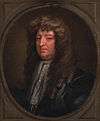 |
Samuel Butler | 1612 | 1680 | 68 | 1721 | Memorial bust | Poet |
 |
Lord Byron | 1788 | 1824 | 36 | 1969 | Floor stone | Poet |
Jul2006.jpg) |
Cædmon | fl.657 | fl.680 | unknown | 1966 | Floor stone | Poet |
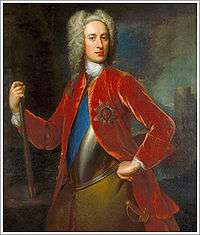 |
John Campbell | 1678 | 1743 | 64 | 1749 | Monument | Soldier and nobleman |
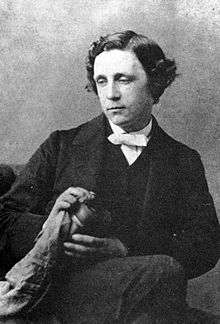 |
Lewis Carroll | 1832 | 1898 | 65 | 1982 | Floor stone | Author |
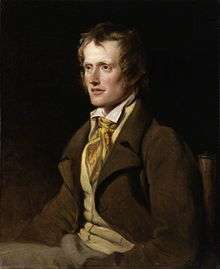 |
John Clare | 1793 | 1864 | 70 | 1989 | Floor stone | Poet |
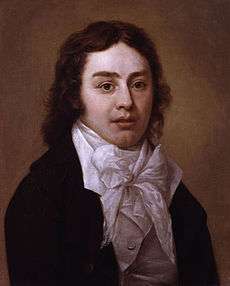 |
Samuel Taylor Coleridge | 1772 | 1834 | 61 | 1885 | Memorial bust | Poet |
 |
George Eliot | 1819 | 1880 | 61 | 1980 | Floor stone | Author |
| |
T. S. Eliot | 1888 | 1965 | 76 | 1967 | Floor stone | Poet and playwright |
 |
David Frost | 1939 | 2013 | 74 | 2014 | Floor stone[22] | Journalist, comedian, writer and media personality |
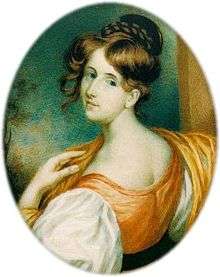 |
Elizabeth Gaskell | 1810 | 1865 | 55 | 2010 | Panel on Hubbard memorial window | Novelist |
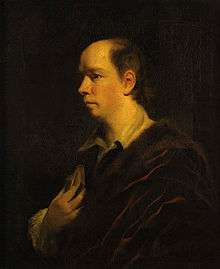 |
Oliver Goldsmith | 1728 | 1774 | 45 | 1776 | Memorial tablet and bust | Poet and playwright |
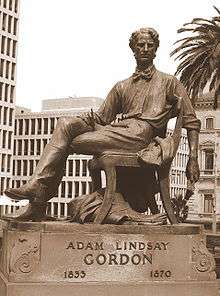 |
Adam Lindsay Gordon | 1833 | 1870 | 36 | 1934 | Memorial bust | Poet |
| ... | John Ernest Grabe | 1666 | 1711 | 44–45 | 1727 | Monument | Priest and theologian |
 |
Thomas Gray | 1716 | 1771 | 54 | 1778 | Monument | Poet and historian |
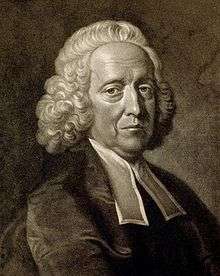 |
Stephen Hales | 1677 | 1761 | 83 | 1761 | Monument | Priest and scientist |
 |
Robert Herrick | 1591 | 1674 | 83 | 1994 | Panel on Hubbard memorial window | Poet |
 |
Gerard Manley Hopkins | 1844 | 1889 | 44 | 1975 | Floor stone | Poet |
 |
A. E. Housman | 1859 | 1936 | 77 | 1996 | Panel on Hubbard memorial window | Poet |
| |
Ted Hughes | 1930 | 1998 | 68 | 2011 | Floor stone at the foot of that for T. S. Eliot, one of his main influences | Poet |
 |
Henry James | 1843 | 1916 | 72 | 1976 | Floor stone | Author |
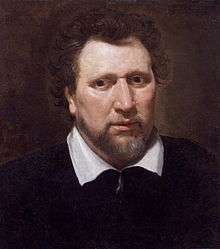 |
Ben Jonson | 1572 | 1637 | 65 | 1723 | Wall tablet | Playwright and poet |
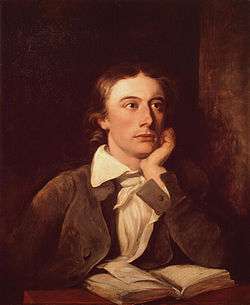 |
John Keats | 1795 | 1821 | 25 | 1954 | Mural tablet | Poet |
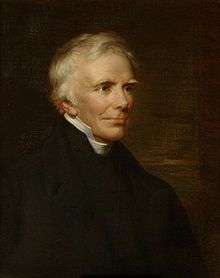 |
John Keble | 1792 | 1866 | 73 | 1873 | Bust | Poet |
| ... | Philip Larkin | 1922 | 1985 | 63 | 2016 | Floor stone. The stone was inscribed with the final two lines from "An Arundel Tomb": Our almost-instinct almost true: |
Poet and novelist |
 |
D. H. Lawrence | 1885 | 1930 | 44 | 1985 | Floor stone | Author and poet |
 |
Edward Lear | 1812 | 1888 | 75 | 1988 | Floor stone | Author and poet |
| ... | C. S. Lewis | 1898 | 1963 | 64 | 2013 | Floor stone. The dedication service, at noon on 22 November 2013, included a reading from The Last Battle by Douglas Gresham, younger stepson of Lewis. Flowers were laid by Walter Hooper, trustee and literary advisor to the Lewis Estate. An address was delivered by former Archbishop of Canterbury Rowan Williams. The floor stone inscription is a quotation from an address by Lewis: "I believe in Christianity as I believe that the Sun has risen, not only because I see it but because by it I see everything else."[23] | Author |
 |
Jenny Lind | 1820 | 1887 | 67 | 1894 | Wall tablet. "A medallion portrait of the famous singer – the last work of the late Mr Birch – has been placed in Poets' Corner, Westminster Abbey, and was yesterday unveiled by the Princess Christian." [24] | Opera singer |
 |
Henry Wadsworth Longfellow | 1807 | 1882 | 75 | 1884 | Memorial bust by Thomas Brock, unveiled 1 March 1884.[25] | Poet |
.jpg) |
F. W. Maitland | 1850 | 1906 | 56 | 2001 | Floor stone | Historian |
 |
Christopher Marlowe | 1564 | 1593 | 29 | 2002 | Panel on Hubbard memorial window | Playwright and poet |
 |
William Mason | 1724 | 1797 | 72–73 | 1799 | Monument | Poet |
| ... | Thomas May | 1595 | 1650 | 54–56 | 1880 | Wall stone | Poet and playwright |
 |
John Milton | 1608 | 1674 | 65 | 1737 | Monument | Poet and author |
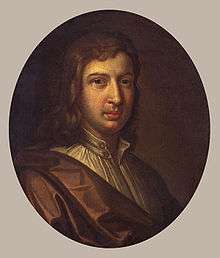 |
John Philips | 1676 | 1709 | 32 | 1710 | Monument | Poet |
 |
Alexander Pope | 1688 | 1744 | 56 | 1994 | Panel on Hubbard memorial window | Poet |
 |
John Pringle | 1707 | 1782 | 74 | ... | Monument | Military physician |
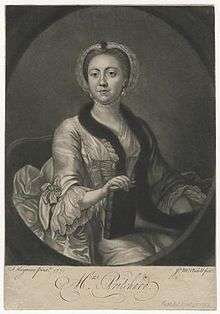 |
Hannah Pritchard | 1711 | 1768 | 56–57 | ... | Monument. Later moved to the triforium. | Actress |
 |
John Ruskin | 1819 | 1900 | 80 | 1902 | Portrait roundel in bronze by Onslow Ford. Unveiled 8 February 1902, after a controversy over whether Ruskin felt monuments like this wasted money and disfigured a building's architectural unity.[26] | Poet and art critic |
 |
Walter Scott | 1771 | 1832 | 61 | 1897 | Bust by the Scottish sculptor John Hutchison, "a beautifully executed copy of the famous Chantrey bust at Abbotsford".[27] | Author and poet |
 |
Thomas Shadwell | c.1642 | 1692 | ~50 | c.1700 | Monument | Poet and playwright |
 |
William Shakespeare | 1564 | 1616 | 52 | 1740 | Monument | Playwright and poet |
 |
Granville Sharp | 1735 | 1813 | 77 | 1816 | Monument | Slavery abolitionist |
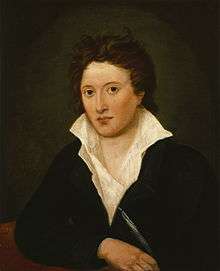 |
Percy Bysshe Shelley | 1792 | 1822 | 29 | 1954 | Mural tablet | Poet |
 |
Robert Southey | 1774 | 1843 | 68 | 1845 | Monument | Poet |
 |
William Makepeace Thackeray | 1811 | 1863 | 52 | 1865 | Bust | Author |
.jpg) |
James Thomson | 1700 | 1748 | 47 | 1762 | Monument | Poet and playwright |
 |
Dylan Thomas | 1914 | 1953 | 39 | 1982 | Floor stone | Poet and author |
_-_Trollope%2C_Anthony_(1815-1882).jpg) |
Anthony Trollope | 1815 | 1882 | 67 | 1993 | Floor stone | Author |
| ... | William Vincent | 1739 | 1815 | 76 | c.1815[28] 1 | Monument | Dean of Westminster |
 |
Oscar Wilde | 1854 | 1900 | 46 | 1995 | Panel on Hubbard memorial window | Playwright and author |
 |
William Wordsworth | 1770 | 1850 | 80 | 1854 | Monument | Poet |
| |
James Wyatt | 1746 | 1813 | 67 | ... | Monument | Architect |
World War I poets
The memorial in Poets' Corner, Westminster Abbey, to 16 Great War poets is a slate stone slab with the names of the poets inscribed on it. It was unveiled on 11 November 1985, the 67th anniversary of the Armistice. An additional inscription quotes Owen's "Preface":[29]
| “ | My subject is War, and the pity of War. The Poetry is in the pity. | ” |
| Image | Poet | Born | Died | Age when war started [30] |
Notes on war service |
Notes on poetry |
|---|---|---|---|---|---|---|
| Richard Aldington | 1892 | 1962 | 22 | Enlisted 1916 Commissioned 1917 Second Lieutenant Royal Sussex Regiment |
... | |
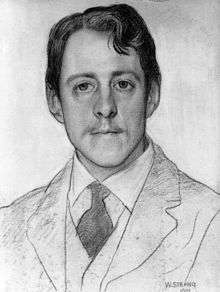 |
Laurence Binyon | 1869 | 1943 | 44 | Volunteered in 1915 and 1916 Hôpital Temporaire d'Arc-en-Barrois British hospital for French soldiers |
... |
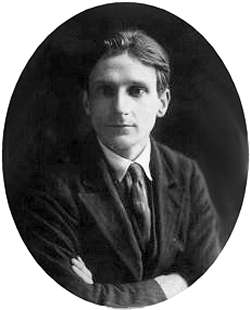 |
Edmund Blunden | 1896 | 1974 | 17 | Commissioned August 1915 Second Lieutenant Royal Sussex Regiment |
... |
 |
Rupert Brooke † | 1887 | 1915 | 27 | Commissioned August 1914 Temporary Sub-Lieutenant Royal Naval Volunteer Reserve |
... |
| ... | Wilfrid Gibson | 1878 | 1962 | 35 | Rejected several times Enlisted October 1917 Army Service Corps (Motor Transport) Never saw active service |
... |
| ... | Robert Graves | 1895 | 1985 | 19 | Commissioned 1914 Royal Welch Fusiliers |
... |
_cropped.jpg) |
Julian Grenfell † | 1888 | 1915 | 26 | Commissioned 1910 Captain (at time of death) Royal Dragoons |
... |
| ... | Ivor Gurney | 1890 | 1937 | 23 | Private Gloucestershire Regiment |
... |
| ... | David Jones | 1895 | 1974 | 18 | Royal Welch Fusiliers | ... |
 |
Robert Nichols | 1893 | 1944 | 20 | Commissioned 1914 Royal Artillery |
... |
.jpg) |
Wilfred Owen † | 1893 | 1918 | 21 | Enlisted 1915 Commissioned June 1916 Second Lieutenant Manchester Regiment |
... |
.jpg) |
Herbert Read | 1893 | 1968 | 20 | Captain Green Howards |
... |
 |
Isaac Rosenberg † | 1890 | 1918 | 23 | Enlisted October 1915 12th Suffolk Folk Regiment King's Own Royal Lancaster |
... |
.jpg) |
Siegfried Sassoon | 1886 | 1967 | 27 | Enlisted 1914 Commissioned May 1915 Captain (at end of war) Royal Welch Fusiliers |
... |
_cropped_and_retouched.jpg) |
Charles Sorley † | 1895 | 1915 | 19 | Enlisted 1914 Captain (at time of death) Suffolk Regiment |
... |
 |
Edward Thomas † | 1878 | 1917 | 36 | Enlisted July 1915 Artists Rifles Commissioned November 1916 Royal Garrison Artillery |
... |
Royal Ballet
The stone slab floor memorial to the four founders of the Royal Ballet was dedicated on 17 November 2009.
| Image | Name | Born | Died | Age at death | Notes on Royal Ballet role |
|---|---|---|---|---|---|
 |
Ninette de Valois | 1898 | 2001 | 102 | ... |
| ... | Frederick Ashton | 1904 | 1988 | 84 | ... |
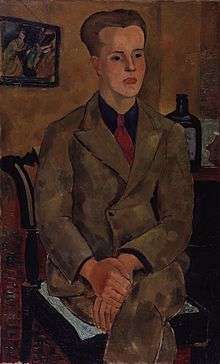 |
Constant Lambert | 1905 | 1951 | 45 | ... |
 |
Margot Fonteyn | 1919 | 1991 | 71 | ... |
Elsewhere in the Abbey
Poets and writers commemorated elsewhere in Westminster Abbey, but not in Poets' Corner proper.[31][32]
| Image | Name | Born | Died | Age at death | Year commemorated |
Details of memorial |
Notes on artistic career |
|---|---|---|---|---|---|---|---|
| ... | Robert Ayton | 1570 | 1638 | 67–68 | Bust | Poet | |
 |
Aphra Behn | 1640 | 1689 | 48 | Gravestone | Author and playwright | |
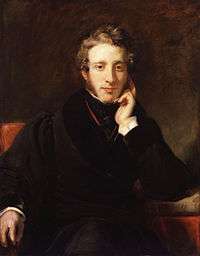 |
Edward Bulwer-Lytton | 1803 | 1873 | 69 | Gravestone | Author and poet | |
 |
John Bunyan | 1628 | 1688 | 59 | 1912 | Memorial window | Author |
 |
Margaret Cavendish | 1623 | 1673 | 69–70 | Monument | Author and poet | |
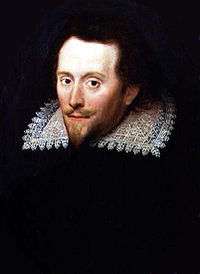 |
William Cavendish | 1592 | 1676 | 84 | Monument | Playwright and poet | |
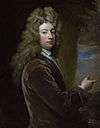 |
William Congreve | 1670 | 1729 | 58 | c.1730 | Monument | Playwright and poet |
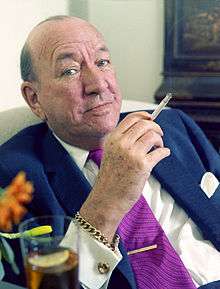 |
Noël Coward | 1899 | 1973 | 73 | 1984 | Floor stone | Playwright and composer |
 |
William Cowper | 1731 | 1800 | 68 | 1876 | Memorial window | Poet and hymnodist |
 |
Wentworth Dillon | 1637 | 1685 | 47–48 | Grave not marked | Poet | |
 |
Benjamin Disraeli | 1804 | 1881 | 76 | 1884 | Statue | Author |
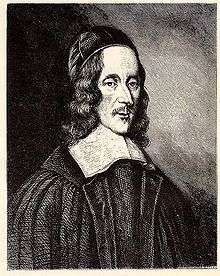 |
George Herbert | 1593 | 1633 | 39 | 1876 | Memorial window | Poet and orator |
 |
Robert Howard | 1626 | 1698 | 72 | Playwright | ||
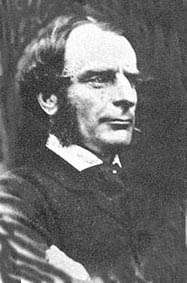 |
Charles Kingsley | 1819 | 1875 | 55 | 1875 | Bust | Author |
 |
James R. Lowell | 1819 | 1891 | 72 | Tablet and window | Poet | |
_Frederick_Denison_Maurice_by_Jane_Mary_Hayward.jpg) |
F. D. Maurice | 1805 | 1872 | 66 | 1932 | Bust | Author |
 |
Anne Oldfield | 1683 | 1730 | 47 | Gravestone | Actress | |
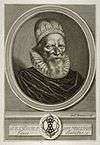 |
Henry Spelman | c.1564 | 1641 | 76–77 | Gravestone | Antiquarian | |
 |
Arthur P. Stanley | 1815 | 1881 | 65 | 1884 | Tomb and effigy | Author |
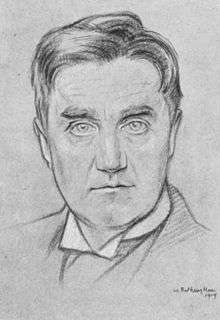 |
Ralph Vaughan Williams | 1872 | 1958 | 86 | 1958 | Floor stone | Composer |
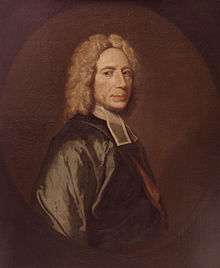 |
Isaac Watts | 1674 | 1748 | 74 | 1779 | Monument | Hymnodist |
See also
Information about the last resting places of other famous poets can be found at:
Poets' Corner is also the title of a play by James Huntrods,[33] and The Poets' Corner was a book of caricatures of famous poets by Max Beerbohm published in 1904.
Notes and references
| Wikimedia Commons has media related to People buried in Westminster Abbey. |
- ↑ Harold Bloom (2009). "Geoffrey Chaucer". p. 13. Infobase Publishing
- ↑ "Elizabeth Gaskell". Westminster-abbey.org (2010-09-25). Retrieved on 2011-10-21.
- ↑ Ted Hughes takes his place in Poets' Corner, BBC News, 6 December 2011
- ↑ "CS Lewis honoured with Poets' Corner memorial". BBC News. Retrieved 23 November 2012
- ↑ "Westminster Abbey honour for poet Philip Larkin". Westminster Abbey. June 2015. Retrieved 27 November 2016.
- ↑ Sawyer, Patrick (26 November 2016). "'Outsider' Larkin finally joins the Establishment in Poets' Corner". The Daily Telegraph.
- 1 2 "Westminster Poets' Corner memorial for Philip Larkin". BBC News. BBC. 2 December 2016. Retrieved 2 December 2016.
- ↑ The Times, 26 March 1796, p. 3
- ↑ A Service to Dedicate a Memorial to the Founders of the Royal Ballet, Westminster Abbey press release, November 2009, accessed 16 March 2010
- ↑ "Monuments & Gravestones: Ben Jonson". Westminster Abbey 1065 to today. Dean and Chapter of Westminster Abbey. Archived from the original on 2008-01-07. Retrieved 2008-05-26.
- ↑ Adams, J. Q. The Jonson Allusion Book. New Haven: Yale University Press, 1922: 195–6.
- ↑ Dunton, Larkin (1896). The World and Its People. Silver, Burdett. p. 34.
- ↑ Abbey to honour Cranford's creator, Westminster Abbey press release, January 2010, accessed 15 March 2010
- ↑ The Times, 29 June 1844, p. 6; 4 July 1844, p. 5
- ↑ The Times, 22 August 1844, p. 3
- ↑ 'Funeral of Mr. Charles Dickens', The Times, 15 June 1870.
- ↑ The Times, 13 February 1827, p. 3
- ↑ The Times, 9 January 1860, p. 10; 10 January 1860, p. 9
- ↑ The Times, 13 October 1892
- ↑ "In accordance with the wish of the family there was no formal ceremonial of unveiling, and, as in the case of General Gordon, Dean Stanley, and the Earl of Beaconsfield, the memorial was placed, a possession for ever, in the presence of none save those by whom the work was done." The Times, 3 June 1895, p. 6
- ↑ The Times, 9 March 1885
- ↑ "Sir David Frost's memorial at Westminster's Poets' Corner". BBC News. 13 March 2014. Retrieved 14 March 2014.
- ↑ A service to dedicate a memorial to C. S. Lewis, writer, scholar, apologist. Westminster Abbey. 2013.
- ↑ The Times, 21 April 1894
- ↑ The Times, 2 November 1992, p. 6; 26 February 1884, p. 10; 3 March 1884, p. 8
- ↑ Sydney C. Cockerell letter to The Times, 22 August 1900; The Times, 7 February 1902, p. 9; 10 February 1902, p. 8
- ↑ The Times, 22 May 1897, p. 16
- ↑ "Yesterday morning, at half-past eleven o'clock, the remains of Dr. VINCENT, the Dean of Westminster, were interred in a private manner, at the back of DRYDEN's monument." The Times, 30 December 1815, p. 3
- ↑ Poets of the Great War, Brigham Young University, accessed 14 March 2010
- ↑ The date used here is 4 August 1914, the date Britain entered the war.
- ↑ Poets' Corner in Westminster Abbey (James Wilkinson, 2007), inside back page
- ↑ Treasures of Westminster Abbey (Tony Trowles, 2008)
- ↑ James Huntrods (1988 – ). Doollee.com. Retrieved on 2011-10-21.
Coordinates: 51°29′57″N 0°7′38.50″W / 51.49917°N 0.1273611°W
